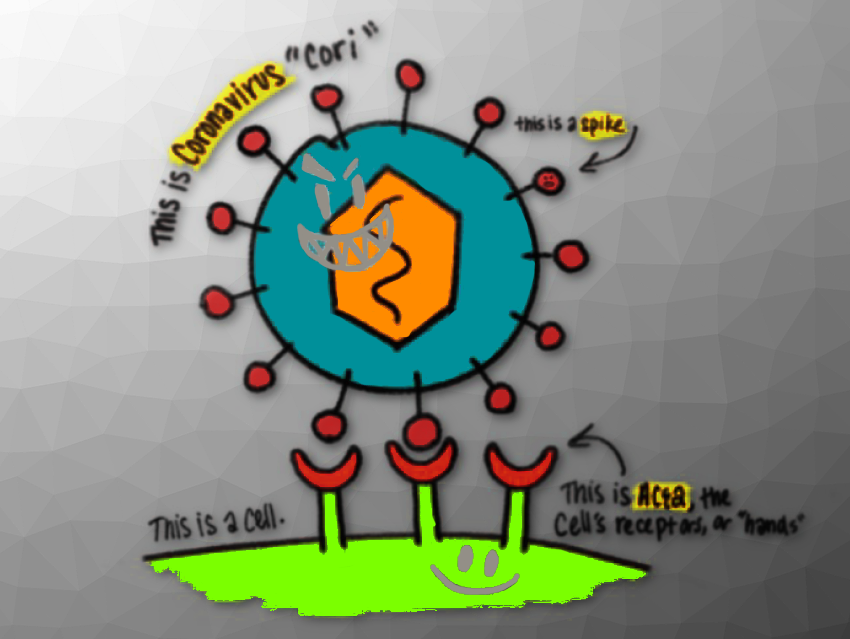The novel coronavirus (2019-nCoV) is a newly emerged human-infectious coronavirus (CoV) that was originated in a Wuhan, China, seafood market. It has quickly spread worldwide: As of Feb 4th, 2020, there are 20,530 confirmed infections and 426 deaths in 25 countries. The World Health Organization (WHO) has declared the coronavirus outbreak a global health emergency. This is the highest level of alarm.
Chinese researchers have quickly isolated and sequenced the virus (GenBank ID: MN908947.3) but details about the virus and how it spreads remain unclear. Currently, there are several international research groups identifying treatments and working on a vaccine against the virus. Wenshe R. Liu and colleagues, Texas A&M University, College Station, USA, have summarized the current research (26.1.2020) and suggest four potential drug candidates.
Coronavirus Entering and Replicating in Host Cell
In general, CoV relies on its so-called spike protein to bind a host cell surface receptor for entry into the host (pictured above). For the 2019-nCoV, it is known that this receptor is angiotensin-converting enzyme 2 (ACE2). After its entry into the host cell, the virus RNA attaches directly to the host ribosome for translation of two large, coterminal polyproteins. These are processed by proteolysis to components for packing new virions. The coronavirus’ main proteinase (3CLpro) and the papain-like protease (PLpro) are involved in the proteolysis process. To replicate the RNA genome, the CoV encodes a replicase. This is an RNA-dependent RNA polymerase (RdRp).
These four proteins, 3CLpro, PLpro, RdRp, and the spike, are essential for the virus. Therefore, therapeutics targeting one of these proteins are currently being tested as a possible treatment for 2019-nCoV.
Possible Treatments
The 2019-nCoV and SARS-CoV (severe acute respiratory syndrome-related coronavirus, GenBank ID: NC_004718.3) share a very high sequence identity on their RdRp and 3CLpro proteins. Remdesivir (developed as a treatment for Ebola virus disease) and 3CLpro-1 are small-molecule antiviral drugs that might have activity against SARS-CoV. Remdesivir is undergoing clinical trial. The researchers recommend using remdesivir and 3CLpro-1 to treat the 2019-nCoV. The Chinese authority may negotiate with Gilead Sciences, Foster City, CA, USA, in the possible use of remdesivir for patients suffering from the 2019-nCoV.
Other potential small molecule therapeutics for the 2019-nCoV according to the researchers include lead vinylsulfone protease inhibitors that prevent the entry of the CoV. In combination with camostat, they increase the survival rate of a mice model suffering from SARS-CoV infection.
The 2019-nCoV spike ribavirin (RBD) is significantly different from the SARS-CoV spike RBD especially in two regions when binding to ACE2. Therefore, previously developed antibodies and therapeutic peptides for the SARS-CoV spike RBD cannot be used for the 2019-nCoV. However, the researchers suggest using peptides and their cocktails gained from RBD and ACE2 as a quick solution to inhibit the RBD-ACE2 interaction.
- Learning from the Past: Possible Urgent Prevention and Treatment Options for Severe Acute,
Respiratory Infections Caused by 2019-nCoV,
Jared S. Morse, Tyler Lalonde, Shiqing Xu, Wenshe R. Liu,
ChemBioChem 2020.
https://doi.org/10.1002/cbic.202000047
Also of Interest
- LitCovid
Curated literature hub for tracking up-to-date scientific information about COVID-19 - Many publishers and other entities have signed a joint statement to ensure that COVID-19 research findings and data are shared rapidly and openly





SARS-CoV-2 is the name of the virus previously called 2019-nCoV
COVID-19 is the name for the disease it causes